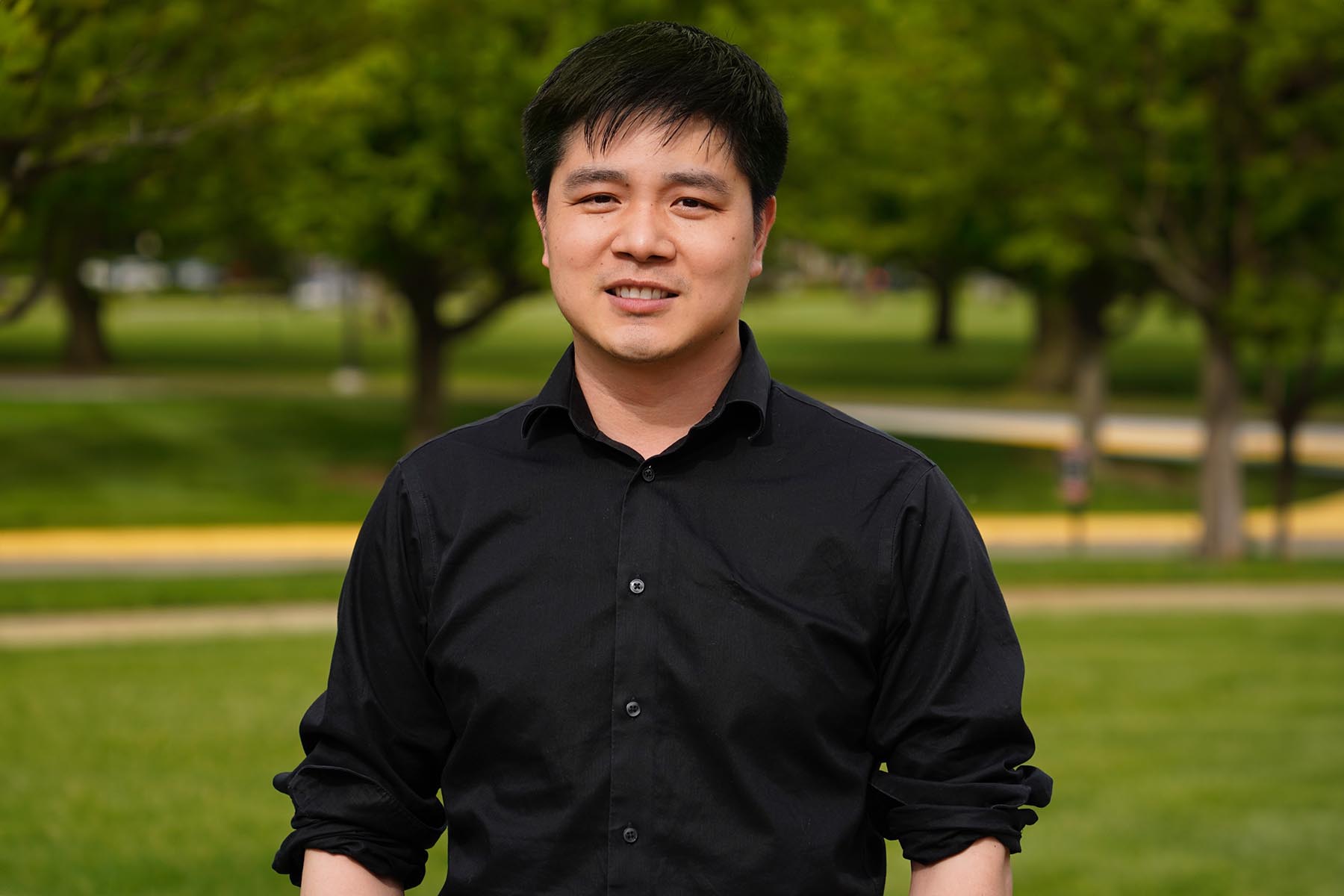From micro to macro: cooling data centers from the inside out

The grant comes from the Advanced Research Projects Agency-Energy (ARPA-E), as part of its Cooling Operations Optimized for Leaps in Energy, Reliability, and Carbon Hyperefficiency for Information Processing Systems (COOLERCHIPS) program.
“What’s unique about this project is the multiple scales,” said Tiwei Wei, assistant professor of mechanical engineering and the project’s lead principal investigator. “ We are focused on cooling not only at the level of semiconductor microchips and packaging, but also at the level of components, racks and systems, and even to the arrangement of the data center itself. All of these aspects are closely interconnected and work together to achieve efficient cooling.”
Wei’s ALPHA Lab focuses on semiconductor packaging, heat transfer and assembly. One of his areas of study involves two-phase jet impingement cooling, where microchannels filled with liquid are built directly within the microchip packaging itself. When the chip generates heat, the liquid boils and the resulting vapor carries the heat away. The vapor then condenses and is recirculated to start the cooling process anew. These cooling devices will be integrated, assembled and characterized in Wei’s advanced packaging lab at Birck Nanotechnology Center, home to one of the largest clean rooms in academia.
“This cooling method is ideal for high-performance semiconductors, like the ones found on servers in data centers,” Wei said, “but it also has great potential for cooling other high-power electronic devices and systems.”
Another innovative aspect of the proposal comes from Justin Weibel, associate professor of mechanical engineering and director of the Cooling Technologies Research Center. He will focus on topology optimization, a computer modeling technique that develops the most efficient arrangement of the microchannels for dissipating the most heat from the chip. That same technique will also be used at the macro level.
“It’s one thing to design a cooling device at the chip level,” Wei said. “But it’s important that these solutions also scale up, especially in a data center environment. The arrangement of the components needs to be optimized, as does the arrangement of the server racks themselves and even the software and user interfaces.”
Wei will collaborate with Bahgat Sammakia, Scott Schiffres, and Srikanth Rangarajan at Binghamton University to manufacture the fluid distribution manifold for the chip-level cooling device, as well as integrate the designs into functional components. They will also partner with SEGUENTE Inc., a global technology provider of high-performance liquid-cooled hardware platforms and software solutions. According to Ryan Enright, Chief Technology Officer at SEGUENTE Inc., “partnering with this strong academic team will further enhance SEGUENTE’s mission to address digital transformation demands. It is key that we build innovation pipelines to continue delivering products and services that enable customers to achieve sustainability goals and enhanced performance.”
“Improving the cooling efficiency of these microchips will have a huge impact,” Wei said. “If we can scale up our micro solution into a macro solution, then those energy savings will multiply by every data center in the world.”
The three-year $2.1 million grant started in July 2023, Wei’s first major research award since joining Purdue. ARPA-E increased the award in October 2024 to a total of $2.5 million.
“As a new professor, it’s not always easy to be selected for these projects, especially as a lead P.I.,” Wei said. “But my mentor, professor Weibel, encouraged me to apply. The proposal took a long time to come together, but when they approved it, I was so excited! I’m thankful to ARPA-E for funding these cutting-edge projects.”
Purdue University has recently launched a comprehensive semiconductors and microelectronics program, demonstrating its persistent pursuit of leadership in microchip advancement through a series of innovative partnerships, programs and facilities.

Writer: Jared Pike, jaredpike@purdue.edu, 765-496-0374
Source: Tiwei Wei, tiwei@purdue.edu
